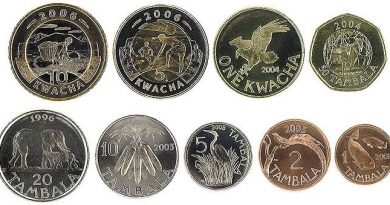Upside Risk Reward Definition and Examples

Upside: Risk/Reward Definition and Examples
What Is Upside?
Upside refers to the potential increase in the value of an investment, portfolio, company, sector, market, or economy. It is measured in monetary value or percentage terms. Analysts commonly use technical or fundamental analysis techniques to predict future price and upside of an investment, especially for stock prices. A higher upside means that the stock has more value than its current price. Upside is the opposite of downside, which is the negative movement of an investment’s price.
Key Takeaways
- Upside is the potential for an investment to increase in value in terms of money or percentage.
- Upside is the opposite of downside, determining the downward movement of a financial instrument’s price.
- Analysts use fundamental or technical analysis to predict movement.
- The upside is the draw for an investor to invest, and the potential is tied to the risk the investor assumes.
Understanding Upside
Upside refers to the predicted appreciation in the value of an investment, financial portfolio, company, sector, market, or economy. It is the opposite of downside. Upside is simply a projected price increase. It is the motivating factor for an individual to invest. The upside move primarily depends on the risk associated with the investment.
The market axiom of high risk/high reward holds when deciding whether to commit to or pass on an investment. Investors with a high tolerance for risk typically choose investments with huge upside, while risk-averse investors opt for investments with limited upside but more preservation of initial investment value.
Factors that can affect the upside potential for an investment or portfolio include market swings and trends, economic indicators, company- and industry-specific news and events, and business dynamics.
The high risk/high reward concept corresponds with the idea of upside: the higher the risk, the more upside an investment has.
Upside and Trading Strategies
Fundamental Analysis
Fundamental analysis evaluates the upside price of a stock by considering the ability of the investment firm to generate sales and earnings and make effective decisions about company assets. Companies that manage costs well and increase profit margins have a higher upside.
Businesses can increase sales by moving into new markets or adding a product line. Money managers who use fundamental analysis also consider how effectively a business uses assets to generate sales and profits.
Technical Analysis
Technical analysis is a method that considers the historic patterns in the price of a stock and the trading volume of a security. Technical analysts believe that price movements are trends, and they use charts to determine the upside in a stock’s price.
For example, a breakout occurs when a stock price trades above a recent price trend. If a stock has been trading between $20 and $25 per share, a price move to $28 is a breakout, indicating that the stock price has upside above $28.
Importance of Upside
Upside not only refers to an investment’s potential gains in value but also judges the success of a portfolio manager’s performance compared to a benchmark. For many mutual funds, the investment objective is to outperform a specific benchmark, such as the Standard & Poor’s 500 indexes. The upside capture ratio indicates how much upside the mutual fund captures compared to the benchmark.
Upside also plays a part in short selling, which is the sale of stock that an investor does not own. In short selling, the seller must deliver borrowed securities to the buyer by the settlement date. Eventually, the short seller must buy the shares to cover the short position, and the seller’s goal is to buy back shares at a lower price. Short-sellers look for stocks that have reached their upside potential, increasing the potential for the stock to decline.
What Is the Upside/Downside Ratio?
The upside/downside ratio is a metric used by technical analysts to determine the direction change of financial assets. It calculates the upward versus downward volume by dividing advancing issues (volume traded that close above their opening price) by declining issues (volume traded that close below their opening price).
Analysts and investors use this ratio to understand the momentum of a financial instrument, company, market, sector, or economy. It helps identify entry and exit points to maximize gains and minimize losses.
What Does Downside Mean?
Downside is the drop or negative movement in the price of a financial asset, such as a stock. It can also refer to the downward movement of a financial portfolio, company, sector, or market. Downside is expressed in a dollar value or percentage terms, and it is the opposite of upside.
What Is Upside Risk?
Upside risk refers to the uncertain upward potential for a financial instrument, market, sector, or economy. It is positive and can work to an investor or company’s favor. Upside risk is the opposite of downside risk, which allows observers to determine potential losses.
The Bottom Line
Upside is the potential rise in value. It can be used to measure the possibility of an increase in the value of an asset, portfolio, company, sector, or the economy. As an investor, it is a useful tool for determining stock prices and constructing a financial portfolio. Always do your due diligence and regular checkups to avoid future losses.



